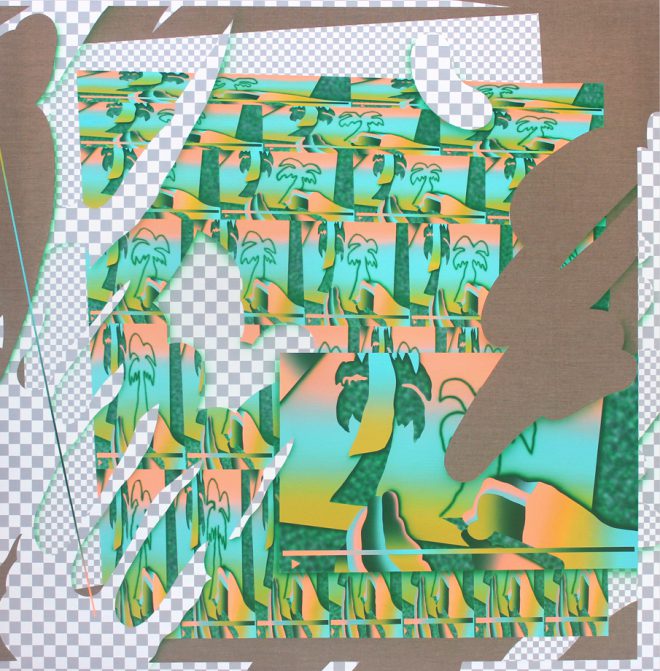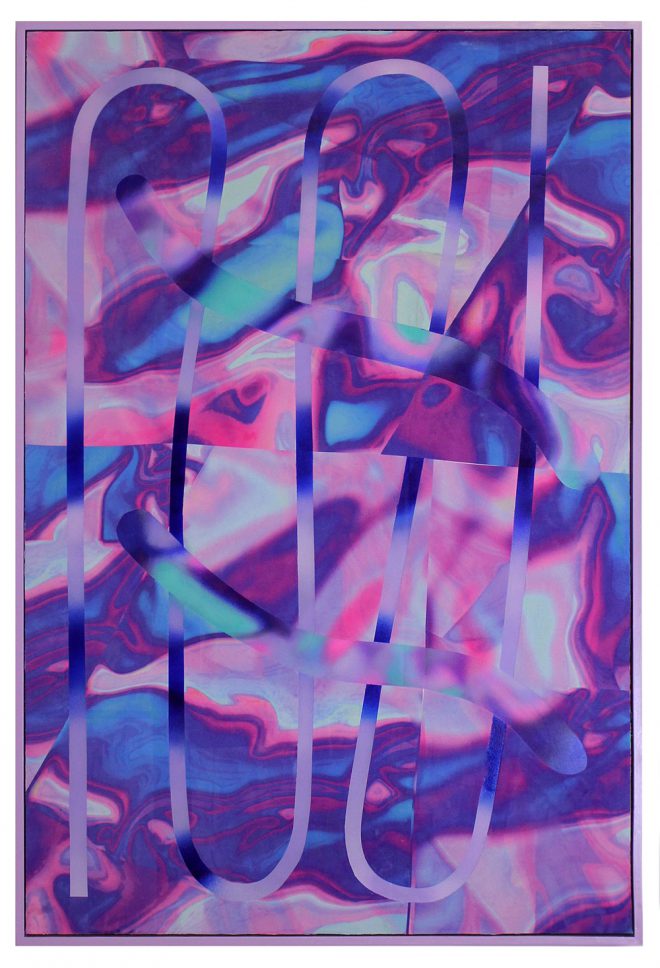State of the Abstract: “Unfamiliar Again” at the Newcomb Art Museum
Brooke Sauvage contemplates the appeal of abstraction through the lens of a group exhibition at the Newcomb Art Museum of Tulane University.

Morgan Blair, 30 Most Shockingly Gorgeous Stars Who Became Monsters After Learning This One Trick That Could Change Everything About The Way You See This Video: Hot Wife Cooks What For Husband After Sees Him With These Top 30 Celebrity Tummy Tuck Nightmares, Your Jaw Will Drop!, 2016. Acrylic on linen. Courtesy the artist.
I sometimes wonder why abstract art—oblong blobs of shapes and colors, swimming in a seeming absence of logic—is compelling to viewers who inhabit a world ruled by an almost obsessive attention to order. Then again, perhaps I’ve already answered my own question.
Abstract Expressionism emerged in New York in the 1940s and ’50s, representing a transition from the European masters of the early twentieth century to a style, emblematized by giants like Jackson Pollock, that was unhinged according to artistic standards of the time. But the lasting popularity of those works is a reminder that abstraction, in both its messiest and its most minimal forms, has been a major tenet of contemporary art and design.
In “Unfamiliar Again: Contemporary Women Abstractionists,” the Newcomb Art Museum of Tulane University presents seven female artists who have updated the state of the abstract in the American consciousness, accounting for technology’s influence on the psyche. In the exhibition, one sees a range of artists: some, fairly fresh from art school, mired in the millennial obsession with media, as well as others who were born during the height of Abstract Expressionism itself. Regardless of age, all the artists reckon with, and often repurpose, digital media to produce their works.
One of the older artists included, Barbara Takenaga, produces paintings accomplished with minute, detailed brushstrokes, evoking the microscopic and the cosmic at once. Spark, 2011, could depict the Big Bang as easily as a cell powered by mutant mitochondria—a white, flagellating nexus radiating alternating rust, teal, and black dials that wave on into infinity.

Anne Vieux, venus slide, 2017. Acrylic on sublimation-dyed faux suede. Courtesy the artist.
Amy Ellingson begins her works with digital sketches, which she later transposes into paintings, where constellations of geometric forms are guided into patterns by digital processing algorithms. In Variation: Yellow (dusk), 2016, Ellingson conveys a sense of horizontal motion through multicolored pieces across a yellow backdrop. One can almost see the forms moving across the canvas like a line of code down a computer screen.
Anne Vieux’s works look as though they might have been reblogged thousands of times on Tumblr, capitalizing on the millennial fascination with shiny objects. Vieux uses scans of holographic paper to create whirling works of hidden dimensions and rich color, as in Eclipse, 2017, in which she translates the scans into acrylic paint on faux suede. A line that snakes across the piece creates a current between the soft and the linear, a striking division between chaos and order.
Morgan Blair is perhaps the enfant terrible of the show—the most precocious navigator of the Internet, to great effect. She sources inspiration for her images from YouTube videos, Craigslist “free stuff” listings, and children’s claymation projects to create works that show patterned repetitions of these abstracted references. The titles are almost as engaging as the works themselves: In Ted Cruz and Tom Cruise and Ted Bundy Take Poppers on Tropical Cruise Simulator at King of Prussia Mall (King of Prussia, PA), Dedicate Lives to Edible Arrangement Innovation Culture, 2016, Blair deploys acrylic and sand on canvas in a pattern composed of what seem to be warped pineapples and melon slices. There is something quaintly phallic about the rendering, something quietly tropical in the color palette of orange, purple, and green. The empty edges are filled in with the gray and white checkerboard belonging to Photoshop files with transparent backgrounds.
After seeing “Unfamiliar Again,” I found myself filling in the chips in my nail polish with different colors, achieving a fluttering effect on the tips, as if I’d dipped them into candy-colored pots. Is this not how the abstract affects us—in a subtle, psychic sense, adjusting our perspective to appreciate the mess that paradoxically constitutes the order of life? In an increasingly overstimulated world, it seems, we need abstract painters now more than ever: Only the underworld of the abstract can unravel our chaotic realities.
Editor's Note
“Unfamiliar Again: Contemporary Women Abstractionists” is on view through December 23, 2017, at the Newcomb Art Museum of Tulane University in New Orleans.



